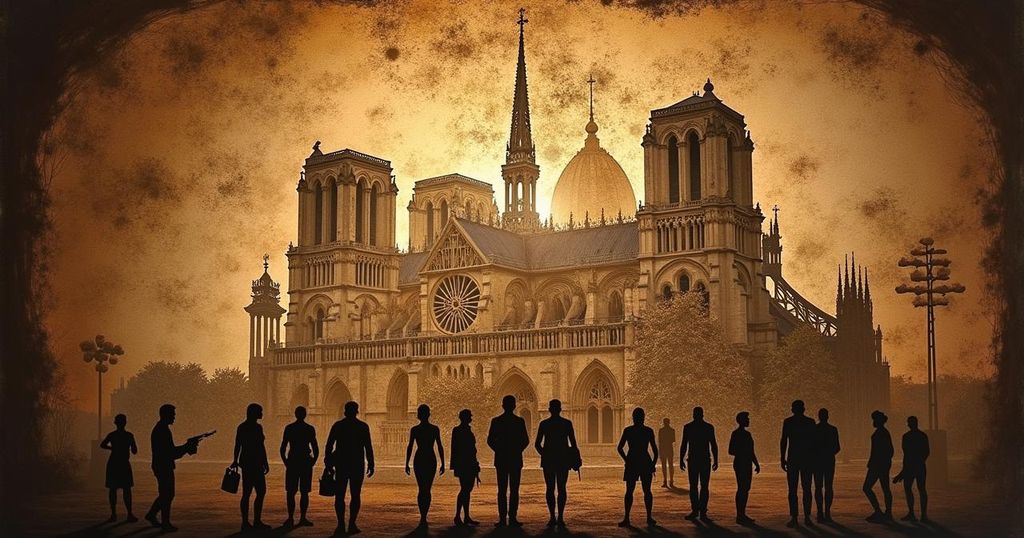Unearthing Notre-Dame: The Archaeological Adventure Beneath the Cathedral

Between February and April 2022, archaeologists excavated Notre-Dame’s transept, uncovering significant medieval relics, including lead coffins and a wealth of colorful jubé fragments, all while preserving the site’s rich history. These discoveries contribute to ongoing renovation efforts and set the stage for future archaeological guidelines.
From February to April 2022, archaeologists from the National Institute for Preventive Archaeological Research (Inrap) dug into the ground beneath the transept’s crossing at Notre-Dame as part of the preparations for scaffolding one of the world’s most famous cathedrals. They stumbled upon a treasure trove of artifacts dating as far back as the Middle Ages, shedding light on the cathedral’s storied history and its many rituals—think of it as an intense archaeological game of hide and seek, but with tombs and ancient bricks! The team unearthed some truly impressive medieval relics. Once they brushed aside the fire-damaged floor tiles, they uncovered historical treasures beneath. Among the finds was a stable platform from between the 14th and 17th centuries and multiple burial sites, including two unprecedented lead coffins. “They have notable differences in lead composition and shape,” noted Christophe Besnier, Inrap’s lead archaeologist on the project. But the real star of the show was a little bronze plaque revealing the identity of one of the deceased: Canon Antoine de la Porte, who died on Christmas Eve in 1710—talk about a festive farewell! Meanwhile, the other, more enigmatic coffin belonged to the ‘Mysterious Cavalier,’ whose details are shrouded in mystery—much like a contestant on a dating show looking for love in all the wrong places. It was found awkwardly stuffed into a too-small burial chamber, and the archaeologists even discovered evidence of a funeral cushion under his head. The plot thickens! They whisked both coffins off to a forensic lab for careful examination like they were the hottest exhibits on a reality show. In addition to the tombs, the excavation revealed rubble from the destroyed jubé (a screen in a church, not to be confused with rapper Lil’ Jubé), complete with over 1,000 fragments weighing a whopping nine tons. This is where it gets spicy—over 700 of these pieces still flaunt their original colors, still glimmering like they just walked off a medieval runway! “We can completely revise our knowledge of the jubé with this discovery,” said Besnier, with all the excitement of a kid in a candy shop. Aside from the jaw-dropping discoveries at the transept, archaeologists were busy elsewhere, meticulously sorting through debris from the fire—think of them as conscientious archaeologists on a cleanliness quest. Soon after the blazes subsided, experts implemented a protocol to sift through charred remains and extract potential artifacts, even managing to salvage hints of ancient wood! Excavation efforts also unveiled a massive Carolingian building and remnants from the Roman Empire. It’s like digging up layers of history; every shovelful brings more surprises from the past! Dominique Garcia, Inrap’s president, pointed out that this work at Notre-Dame not only highlights the cathedral’s rich history but also ponders the generally neglected archaeological opportunities at working cathedrals across Europe. In a nutshell, these digs at Notre-Dame could help set important guidelines for preserving historic structures going forward—the sacred architecture game just got serious, folks!
The Notre-Dame Cathedral, an iconic symbol in Paris, has undergone extensive archaeological work due to its significant historical importance. Following the devastating fire in April 2019, various teams have been engaged in excavating the cathedral’s grounds, uncovering rich layers of history and artifacts that date back centuries. This process is known as preventive archaeology, aimed at preserving as much historical data as possible before reconstruction efforts continue.
In conclusion, the archaeological endeavors at Notre-Dame have not only unearthed crucial insights into its storied past, including the discovery of significant burial sites and fragments of ornate screens but also set new standards for how archaeological work can be integrated into ongoing building preservation efforts. The challenges posed by the renovation are being tackled with creativity and respect for history, ensuring that even as we move forward, we remain connected to the past—like a time-traveling archaeologist on an adventure!
Original Source: www.connaissancedesarts.com







